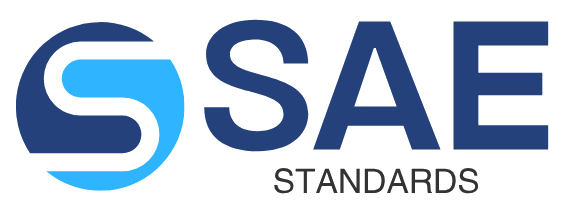ABOUT SAE WEBSTORE
The SAE Webstore is an online electronic standards web-based ordering international standards:
Purchase standards online with a major credit card (Visa, MC or Amex).
Download standards immediately
Learn various ways that you can obtain the standards you need.
WHY CHARGE FOR STANDARDS?
Though the electronic development and dissemination of standards does reduce costs such as printing, warehousing, and shipping hard-copy standards, the cost of producing and distributing – as well as maintaining – standards and standards-related information remains. Most expenses related to standards development and maintenance remain regardless of the method of distribution.
Summarized below are several of the factors impacting the final price of a standard.
Supporting the standards development process.
While most of the people working on standards development are volunteers, standards developers incur expense in the coordination of these voluntary efforts. From the time a new project is started through the final balloting and adoption of a standard and the subsequent maintenance procedures, much effort is involved in supporting the volunteers who actually write the documents. Meetings are scheduled; minutes and draft documents are distributed; and there remains a constant requirement for public notification about the activity. For international standards, the cost of standards also covers the cost of operating the ISO and IEC central secretariats.
Hundreds of staff employed by SAE and Standards Developing Organizations (SDOs) across the nation provide direct support for the domestic and international technical development activities of the volunteers.
Supporting the standards users.
Once a standard is written and approved, users need to know it is available for their use. Catalogs and indexes must be created and maintained, whether in print or electronic format. Users may also need help in identifying the particular standard that is applicable to their need; this often goes beyond the kind of information available in a catalog or database. Directly charging for this kind of support would impose a barrier to the dissemination of the information in the standards, which is what the user ultimately wants. In light of this, operational expenses are recovered through the sale of standards.
In addition, considerable resources are expended in educating federal, state, and local government regulators and legislators as to the value and integrity of voluntary standards, and often, defending in the courts a standard and the process under which it was developed. Standards sales also support the staff time required to promote the global acceptance of international standards. These are important values for the users of standards who rely on marketplace acceptance of these standards to operate commercially.
Intellectual property and commercial value issues.
The information contained in a standard is the intellectual property of the developing organization. When others want to use this property, they are expected to pay a fair value for it. If incorporating the content of a standard is deemed necessary in the development of a product or service, obtaining this intellectual property should be seen as no different from obtaining any other component of the product.
Electronic dissemination
While less expensive than paper-based development and distribution, electronic standards do incur production, warehousing and distribution costs in terms of manpower, facilities and equipment.
We hope this information provides some insight as to why there is a charge for standards, regardless of the distribution method.
SAE DOCUMENTS AND THE ADOBE READER FORMAT
All of the electronic standards are in Adobe’s Portable Document Format (PDF). You will need Acrobat to view standards purchased from the eStandards Store.
Downloading Adobe Reader
- Go to Adobe Reader.
- Select the appropriate DOWNLOAD link. This will allow you to download the Acrobat Reader installer application. This is a self-extracting file (.hqx, .bin, or .exe).
- Choose a directory to save the Acrobat file and follow instructions from the Acrobat download page.
- Double click on the downloaded file to extract the application. Acrobat will begin installing itself onto your machine. It will issue a series of questions and instructions regarding installing the Reader on your computer. Follow the instructions carefully.
- If you have any problems with the Acrobat Reader, please visit Adobe’s extensive customer support site.
More About SAE standards in PDF
PDF is the preferred file format on Webstore because it is the most widely supported document format on the Web, and because of its reduced file size, it shortens the download time. Some of the older documents are scanned at 300 dpi and converted to PDF+Text. If the document you have is a scanned version, it is because an original, electronic source file was not available. We are also working closely with publishers to identify electronic text which we may not have had access to during the production process.
DOCUMENT FUNCTIONALITY
Once downloaded, the documents can be opened and printed using Acrobat Reader. You will also be able to perform word searches on the full text of the document.
You will not be able to modify or cut and paste text from any of the downloaded standards.
